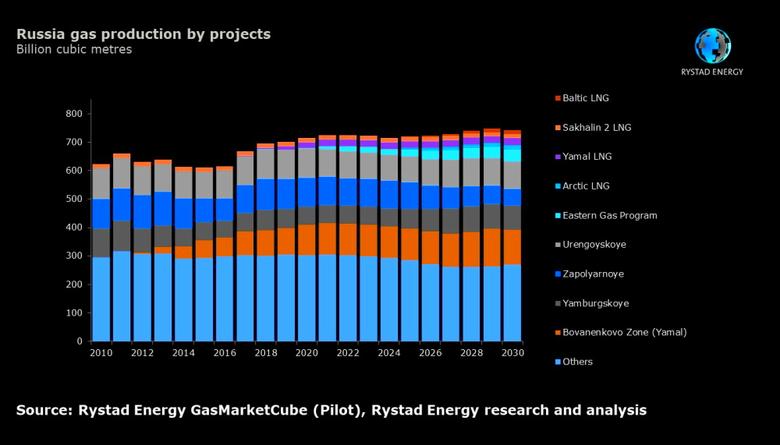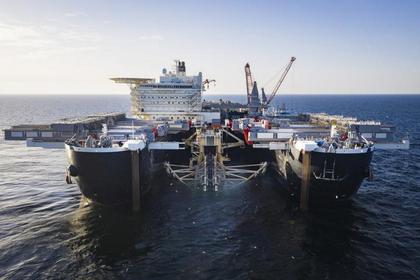
RUSSIA'S GAS FOR EUROPE

PLATTS - 03 Jul 2020 - Russian gas supplies to Europe remained steady in June with exports flat on the month at 11.1 Bcm, S&P Global Platts Analytics data showed.
This marks the third consecutive month that Russian exports to Europe via the four main corridors -- Nord Stream, Yamal-Europe, Ukraine and TurkStream -- have hovered around 11.1 Bcm.
But flows remain well down on last year, with supplies in June down 20% year on year.
A combination of factors -- including a second consecutive mild winter, high gas storage stocks, low prices, and weak demand -- has meant flows falling to an average of 359 million cu m/d so far this year, the data show, down 25% year on year.
Over January-June, Russian gas flows into Europe -- excluding the countries of the former Soviet Union in line with Gazprom's own sales data -- totaled 65.4 Bcm.
While overall flows in June were little changed from May, supplies of gas into Bulgaria via TurkStream slipped to an average of 12 million cu m/d due to the complete shutdown of the line June 23-29 for maintenance.
Russian gas flows to Europe will also be affected by the full shutdown of Nord Stream over July 14-26.
Platts Analytics expects Russian gas flows to Northwest Europe in July to dip to around 130 million cu m/d as a result, with Gazprom expected to make up the loss of the Nord Stream flows through higher flows on other pipelines and storage.
The startup in January of the 31.5 Bcm/year capacity TurkStream pipeline triggered a major shake-up in how Russian gas reaches parts of Europe.
One of the strings is designed to bring Russian gas to the Turkish market directly -- for which no data is available -- while the other flows gas out of Turkey into Bulgaria. Both replace supplies previously sent via Ukraine on the TransBalkan pipeline.
Data on Russian exports in 2020 will be lower as a result because deliveries to Turkey via TurkStream are not included, while supplies to Turkey via the Trans-Balkan line were in 2019.
Nord Stream capacity
In its last full month of exports before its annual maintenance, flows via Nord Stream again continued at its 158 million cu m/d capacity, the data show.
Russian gas supplies the Yamal-Europe corridor via Belarus into Poland also bounced back in June to an average of 81 million cu m/d having dropped in May after the long-term Russian gas transit agreement with Poland expired on May 17.
Gazprom now has to book capacity on the line through Poland under European rules, with flows fluctuating wildly in the last two weeks of May, including several days at the end of the month where volumes entering Poland at the Kondratki point on the border with Belarus fell sharply.
Flows ramped back up in June in line following an increase in monthly capacity bookings.
Supplies via Ukraine were flat in June compared with May, with steady flows through the main interconnection point at Velke Kapusany on the border with Slovakia.
Volumes leaving Ukraine to flow into Eastern Europe are lower than they might have otherwise been given the increase in the practice of backhauling -- or virtual reverse flow.
Russian gas that previously would have left Ukraine to enter Eastern Europe before being sent back to Ukraine for domestic use or storage can now remain in Ukraine under the practice, reducing transportation costs.
Ukraine's gas TSO said July 1 that in the first half of 2020, a total of 1.7 Bcm of gas was supplied to Ukraine using virtual reverse flow from Hungary and Poland.
Ukraine halted direct purchases of Russian gas in November 2015 but instead began importing gas from Europe, including some volumes of Russian gas.
-----
Earlier:









